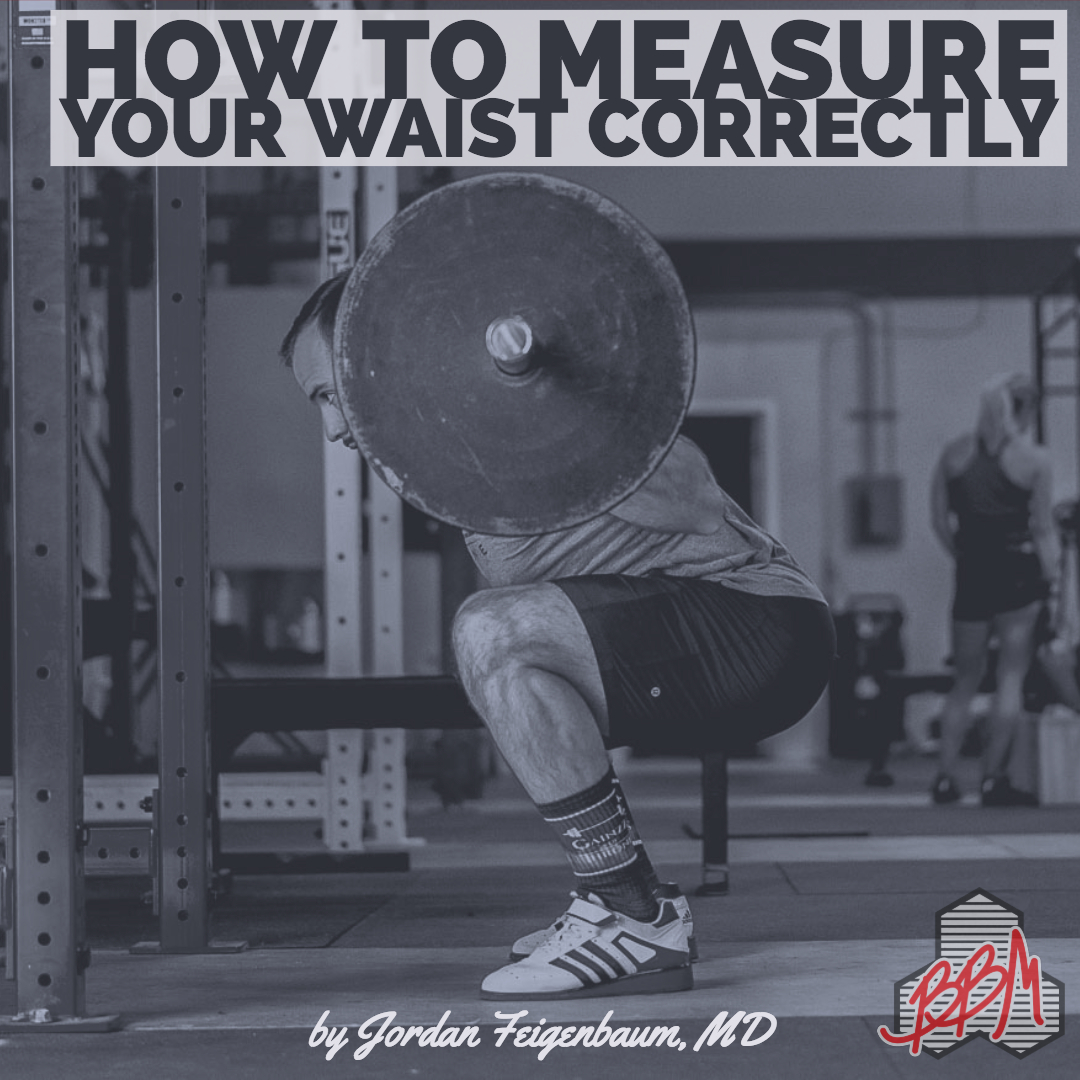If you’ve been paying attention to our latest podcasts, articles, Q/A’s, and other content then you’ve likely heard us discuss the importance of waist circumference in determining who is a good candidate for weight gain and who could stand to lose a bit of weight.
Waist circumference is a quick, low-cost piece of data with reams of scientific evidence relating the distance around your abdomen with health outcomes like premature death, diabetes, heart disease, stroke risk, etc. While the aforementioned disease processes have many variables contributing to their development and burden, we have large, well-designed studies showing that males and females that have a waist circumferences greater than 40 or 34 inches, respectively, have much higher risks of disease than those who do not.*
That said, there’s a right and a wrong way to do this and we want to make sure you’re doing it correctly. The venerable belly button-or more properly, the umbilicus- is typically the anatomical location suggested to take the waist circumference measurement, but this not actually where much of the waist circumference data described above comes from.
To further complicate things, some large data sets do not even report the procedure used to obtain the waist measurements being studied.
Great.
On the plus side, we have some guidance from the Centers for Disease Control and Prevention (CDC) who commission yearly data collection series, The National Heallth and Nutrition Examination Survey (NHANES). Given that many of the waist circumference studies rely on NHANES data, it is reasonable to use their procedure for our own purposes as well.
How to Measure Waist Size
- Use your hand to feel the bony prominences on the front of your hip and find the highest one, theanterior superior iliac spine (ASIS).
- Draw a horizontal line to mark ASIS with cosmetic pencil on both sides
- Place tape measure around waist with the base of the tape measure flush the marked line.
- Pull the tape snug, but do not compress the skin such that it’s indented by the tape measure
- Measure to the nearest 0.1cm at the end of expiration.

What Should Your Waist Measurement Be?
If your waist size is greater than 40 or 34″ for a male or female, respectively, then I would recommend immediate weight loss via calorie restriction and training modifications (if needed). Additionally, if someone is within an inch or so of the cut-point, I’ll typically recommend either maintenance level calories if they are relatively untrained, as the waist circumference tends to decrease readily in this population with training. If the person is more advanced and has been gaining weight, I’ll usually reverse the process at this point unless additional contextual factors are present, e.g. a meet very soon.
And there you have it folks, how to measure your waist, what it means, and what to do about it. Thanks for reading!
-Jordan Feigenbaum, MD
*At present, there appears to be some ethnic differences in waist circumference “cut-points”, e.g. men and women of Asian descent appear to have cut points of 37 and 34 inches, respectively. Additionally, some national guidelines suggest that lower cut points of 37″ and 31″ for men and women, respectively, should be used to identify those at increased risk of adiposity-related chronic disease. That said, we follow the current American Academy of Clinical Endocrinology’s Obesity Guidelines of 40 and 34 inch cut points referred to in this section for all non-Asian men and women as a screening tool.
